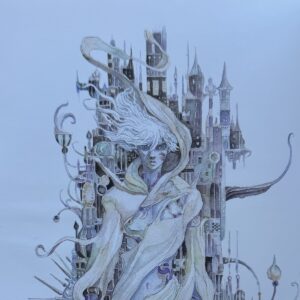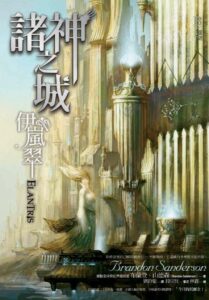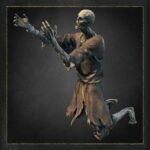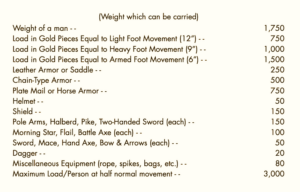Being an incomplete, visual review of the 2024 Player’s Handbook.
I got a copy of this almost entirely on the strength of the new cover art:

(This is the “alt” cover which I think is limited in some way. I find the new standard cover somewhat less appealing, but still better than the strange monochromatic photoshop chic they went with for the 2014 original core books.)
Also, it is now bound like a proper book, with stitches, unlike the 2014 text through most it its iterations:

What is this next image? Could it be that one of the first few full page illustration features Raistlin? Why yes, I will accept some fan service, thank you (please read this in a tone of pure sincerity).

The art direction features a mix of styles, but it is a nice mix. It has a bit of an IP vibe (in the same way that, for example, Star Wars art needs to reflect Star Wars brand considerations), but in a broad fun way, and quality is mostly pretty good. Though, the various bard subclass images are way over the top.

Organization seems improved too. I guess with 10 years of playtesting one would hope so!
WotC finally ditched the race terminology. Now: species. The word “species” reads as strangely biomodern to my ears in a fantasy context, but overall the change is not unwelcome and “race” reads rather poorly too, unless you have long familiarity in the game context. I kind of wish the designers had settled on a term somewhat more reminiscent of the fantastic, such as heritage or tradition or something, but it is whatever.

I am consistently impressed by the communication and rules-related work done by the layout and art direction. For example, consider the way the book introduces backgrounds, each with a landscape or tableau (if the typeface is too small, the backgrounds clockwise are: hermit, noble, sage, merchant):

Yes, using images in this way might temporarily foreclose other possibilities, but at least it pushes the baseline away from the most generic Renaissance Faire medieval stereotypes that might come to mind for many readers by default. And groups with more idiosyncratic or specific desired aesthetics can always communicate those using the standard methods.
The illustrations even encourage creative problem solving rather than engaging the standard fight subsystems for every challenge:

There are a decent number of stat blocks included (basically everything that players would need stats for: companion animals, summons, etc.). This leads me to muse on the idea of a world where these stat blocks are all the monsters that exist. Plus uniques of course.
Did the 2014 release include guns? I forget. Voices on Discord suggest perhaps, but maybe in the Dungeon Master’s Guide. This release has muskets and pistols in the equipment section.
Overall I think the goal of the art direction they chose is to show “here are lots of fun things you can do with this game” rather than choosing a strict aesthetic or genre lane. The illustrations are consistent in style but incorporate bits of many genres; some Hammer horror, some Lovecraft, some Middle-Earth, etc., after passing each figuratively through the D&D IP style filter. For an example referencing another genre, consider this gesture toward the anime culture that influences a lot of tabletop roleplaying now while still feeling like D&D:

I appreciate details like the little feline prosthetic:

Bouncing around a bit now, but even some old standbys such as alignment have been thoughtfully reintroduced, like this following inspiration spur for personality based on alignment, which is nice to have early on in the character creation section.

I have had several non-gamer friends and acquaintances bring up D&D recently with no prompting, so maybe I will end up even using the current rules for the first time in a long while. I will leave you with one final image which shows how they are incorporating aspects of how the game plays rather than just literal depictions of the fictional entities.






